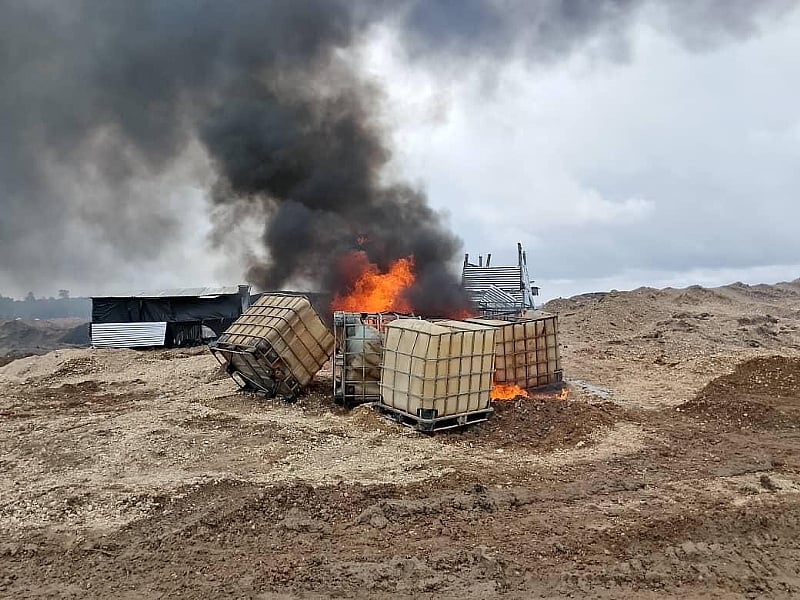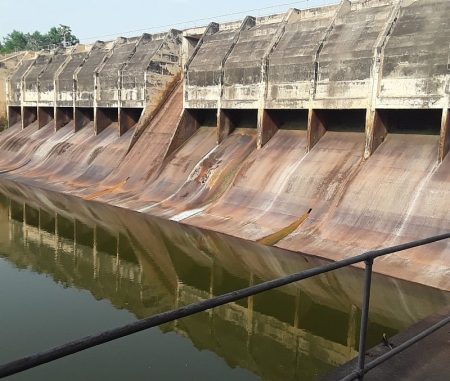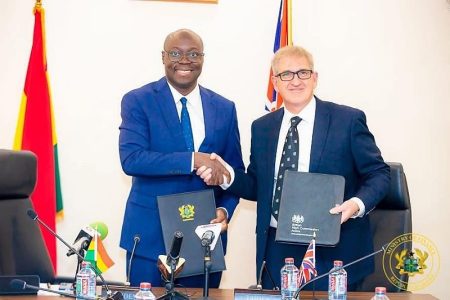The fight against illegal mining in Ghana intensified with a significant operation targeting a notorious hotspot within the Atwima Mponua Forest Reserve. A joint task force, spearheaded by the National Anti-Illegal Mining Operations Secretariat (NAIMOS), in collaboration with the Ghana Army and the Forestry Commission, executed a meticulously planned dawn raid on September 17, 2025, at Anhwiafutu in the Nkawie Forest District. The operation, a culmination of weeks of intelligence gathering, aimed to dismantle illegal mining activities within the reserve and disrupt the networks supporting this destructive practice. The targeted area, situated within the Offin Shelter Belt, is a critical ecological zone and a vital component of Ghana’s forest reserves.
Upon arrival at the site, the task force encountered clear evidence of extensive illegal mining operations, commonly referred to as “galamsey.” The landscape was scarred by excavator tracks, indicating the recent presence and hasty departure of heavy machinery. The miners, alerted to the impending raid, abandoned their operations and fled into the surrounding bush, leaving behind a trail of equipment and makeshift infrastructure. The task force swiftly moved to neutralize the illegal mining apparatus, immobilizing nine excavators concealed within the dense forest. This immobilization, while preventing the immediate removal of the excavators due to logistical constraints within the forest terrain, effectively rendered them unusable for further mining activities, a strategic move to curtail the resumption of operations.
The operation extended beyond the immediate mining sites to encompass ancillary infrastructure and support networks. Two Toyota Hilux pickups and a Nissan pickup, suspected of being used in the illegal mining operation, were seized. Makeshift camps, which served as temporary housing and operational bases for the miners, were dismantled. A range of equipment integral to the illegal mining process was also destroyed, including five Chanfang machines (likely processing equipment), seven water pumps used for extracting and processing materials, fuel depots providing the energy for the machinery, old excavator engines, and other abandoned items. The dismantling of these facilities aimed to cripple the logistical backbone of the galamsey operation, hindering any attempts to quickly resume activities.
Further investigations led the task force to a nearby residential property, suspected of housing individuals involved in the illegal mining activities. Although the occupants, believed to be 12 Chinese nationals, had fled before the arrival of the task force, a search of the premises revealed a stockpile of supplies indicative of their involvement in the illegal operations. The recovered items included 18 excavator batteries, 31 buckets of grease for machinery maintenance, seven gas cylinders, an excavator radiator, and even a mini car-washing machine, likely used for cleaning equipment. The discovery of these items further solidified the link between the residential property and the illegal mining activities within the forest reserve.
This operation represents a significant step in the ongoing battle against illegal mining within Ghana’s protected forest reserves. The immobilization of the excavators, although presenting a logistical challenge for their removal, effectively neutralizes their immediate use in illegal mining. Furthermore, the destruction of the ancillary equipment and the disruption of the support network significantly hampers the ability of the illegal miners to resume operations quickly. The raid also highlights the involvement of foreign nationals in these illegal activities, raising concerns about the international dimensions of this environmental crime.
The government, through NAIMOS, has sent a clear message: Ghana’s forest reserves will not be havens for illegal mining activities. The operation at Atwima Mponua Forest Reserve serves as a stark warning to those engaged in galamsey. The collaborative efforts of NAIMOS, the Ghana Army, and the Forestry Commission demonstrate a concerted and determined approach to combating this destructive practice. The commitment to reclaiming Ghana’s forest reserves and dismantling the sophisticated networks, including potentially armed groups, that protect illegal miners, signals a long-term commitment to environmental protection and the sustainable management of natural resources. The fight, as reiterated by officials, will continue until every inch of reserve land is secured from illegal mining activities.














